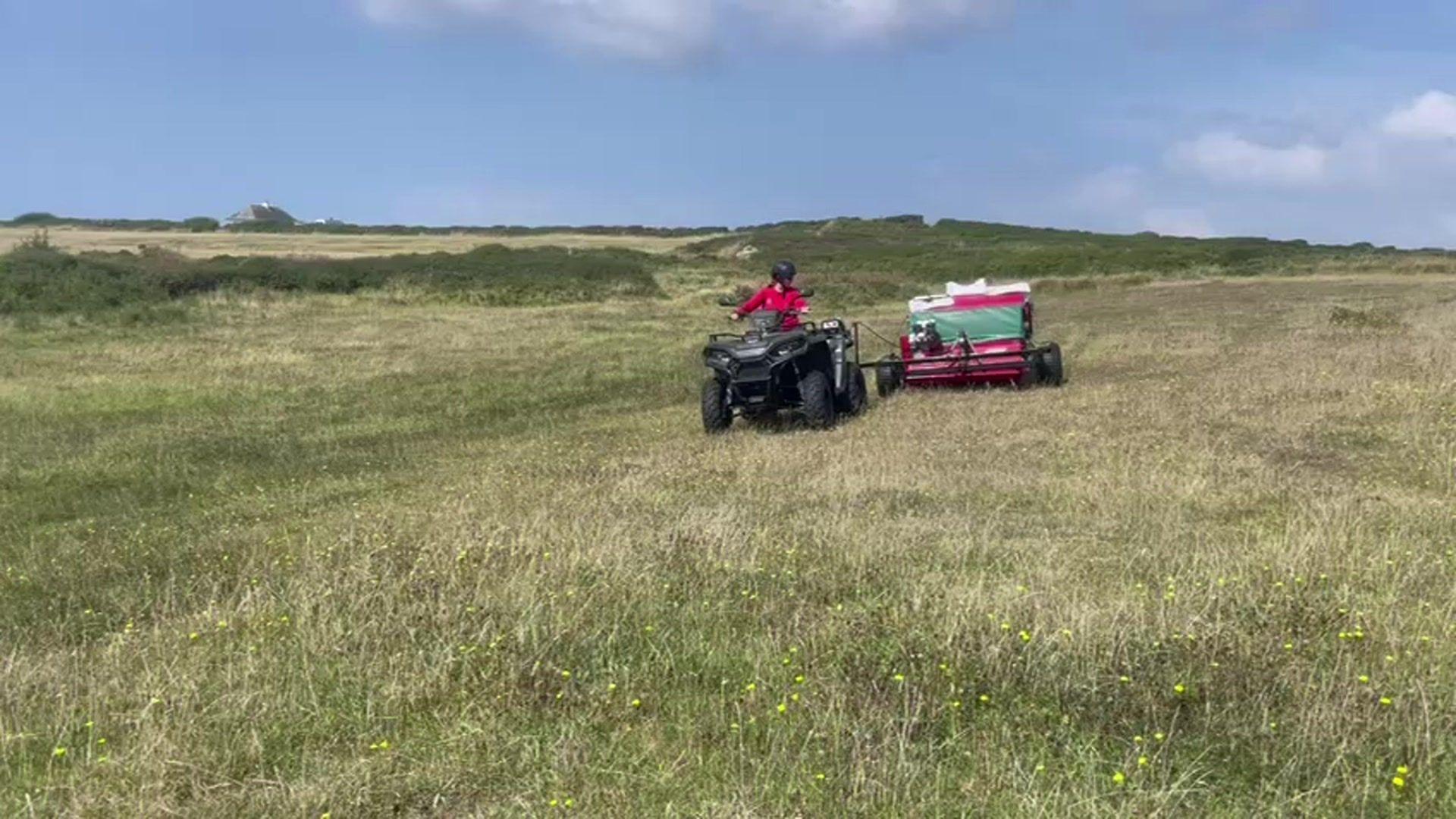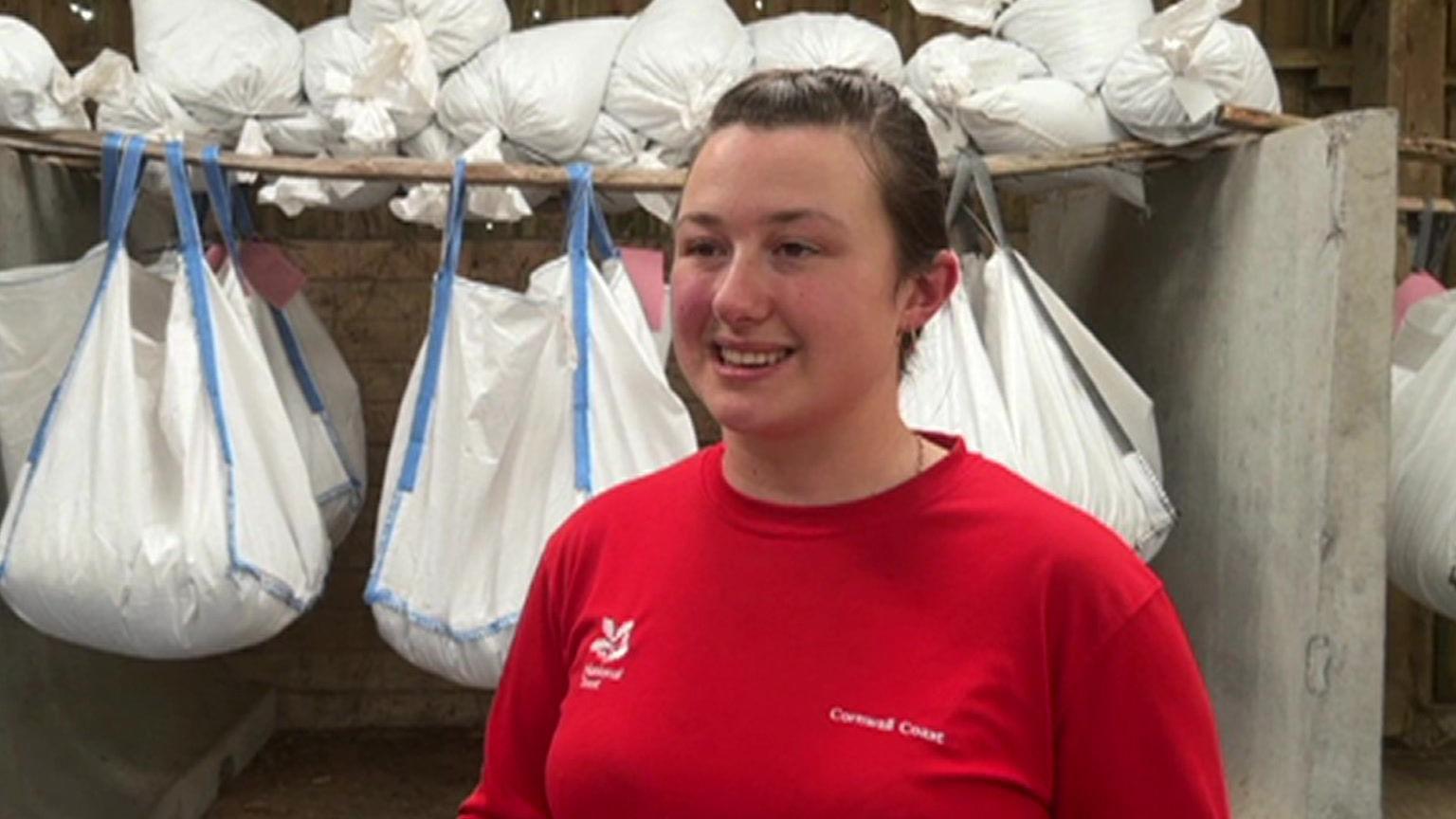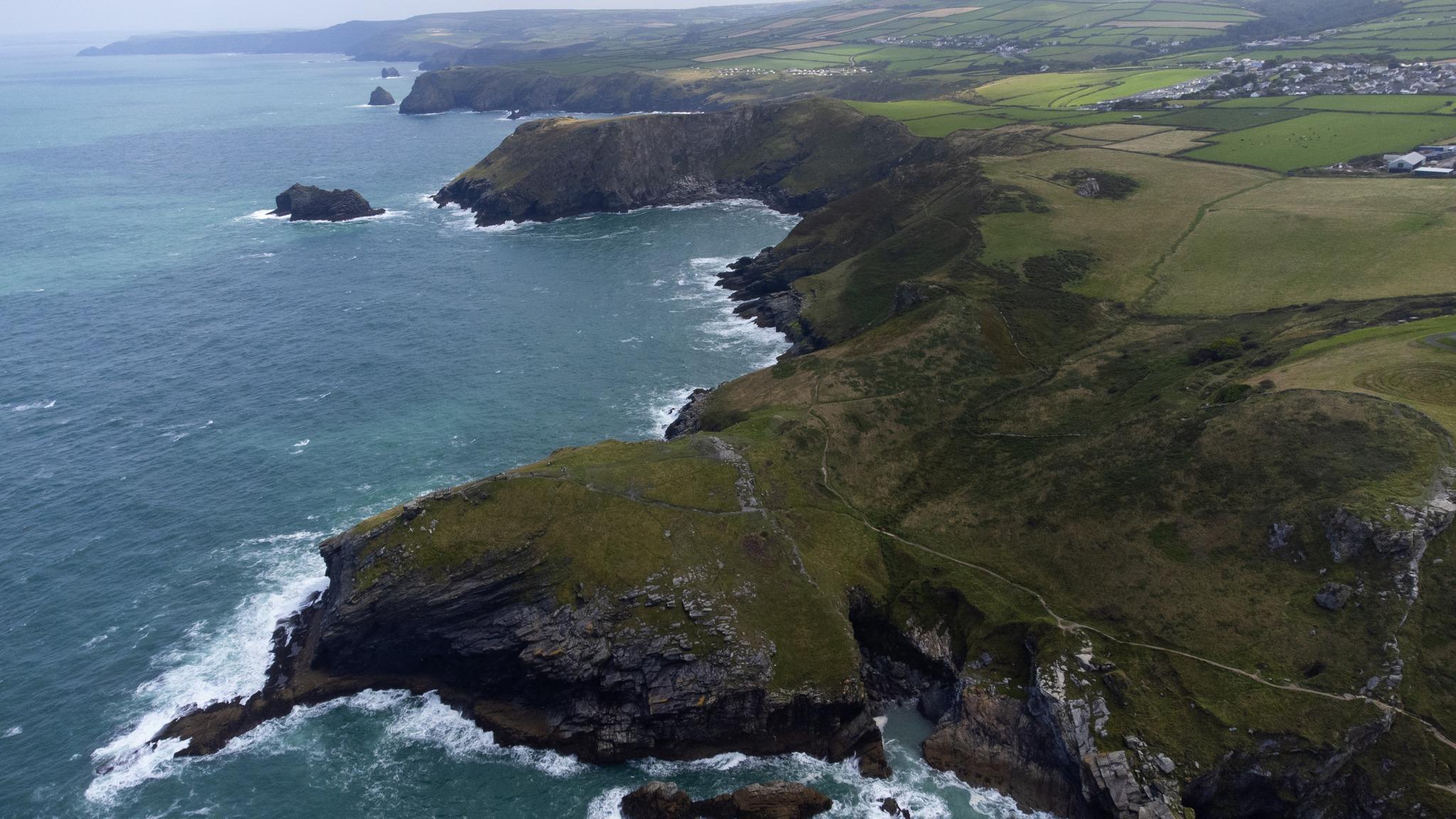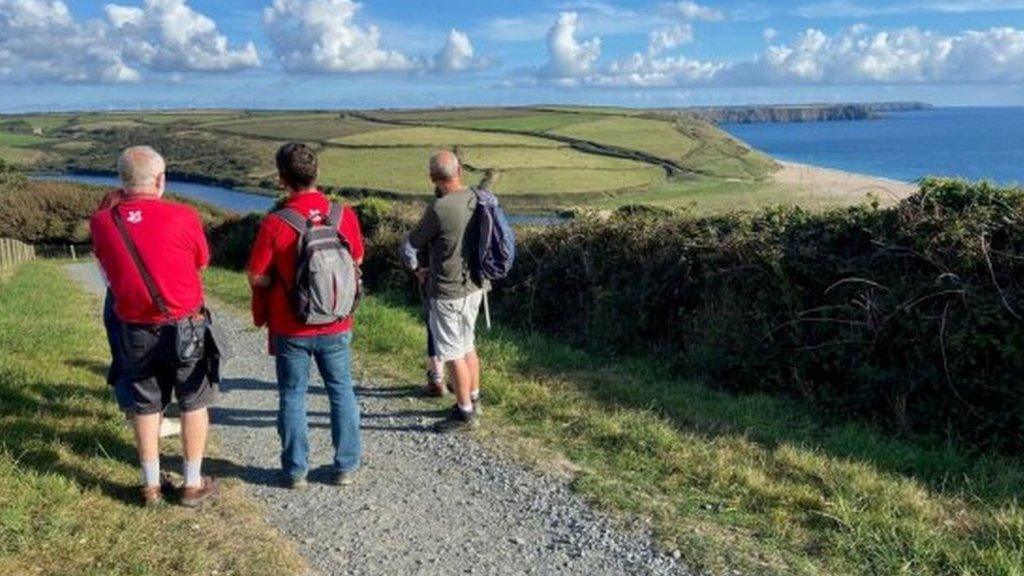National Trust hits nature target with Cornwall's help

The charity announced it had hit its restoration target a year early
- Published
An area twice the size of Manchester has been restored with nature by the National Trust across the country, the charity said.
It had aimed for its ranger teams to restore 25,000 hectares of peatlands, meadows, wetlands, woodlands and saltmarsh on land in its care by 2025, and started the project in 2015.
The charity announced it had hit its target a year early on 30 August.
National Trust sites in Cornwall had helped to contribute to the target, and Fern Carroll-Smith, from the charity, said the effect the work would have on Cornwall was "fantastic".
'Reverse that decline'
Ms Carroll-Smith is part of the Cornish Meadows Project which began in 2023, a three-year plan to cover 250 hectares with wildflower meadows across the region.
She said the project was "one small part" of the overall target the National Trust has hit, and it will continue for the next two years.
She said: "We do seed collecting, seed sowing and also do a lot of back-of-house work.
"We don't realise what we've lost in this country.
"We're nature-depleted in this country and we need to reverse that decline. I want to live in a country that's abundant with nature, birds, bees, butterflies.
"I don't want these to be things of the past."

Fern Carroll-Smith is part of the Cornish Coastal Meadows Project
She added: "By expanding our network of meadows and also woodland, planting and heathland creation that's really connecting together all the habitats we already have."
Ben McCarthy, the charity’s head of nature and restoration ecology, said: “Our focus on restoring our most important habitats to help our precious wildlife is not only contributing towards national conservation targets but is also a critical response to the challenge of climate change."
He added that conservation work on ancient trees and parklands, like Lanhydrock in Cornwall helped to sustain these habitats for rarities such as Oak polypore fungus and birds like the Lesser Spotted Woodpecker.
Follow BBC Cornwall on X (formerly Twitter), external, Facebook, external and Instagram, external. Send your story ideas to spotlight@bbc.co.uk, external.
Related topics
- Published30 August 2023

- Published1 May 2024
